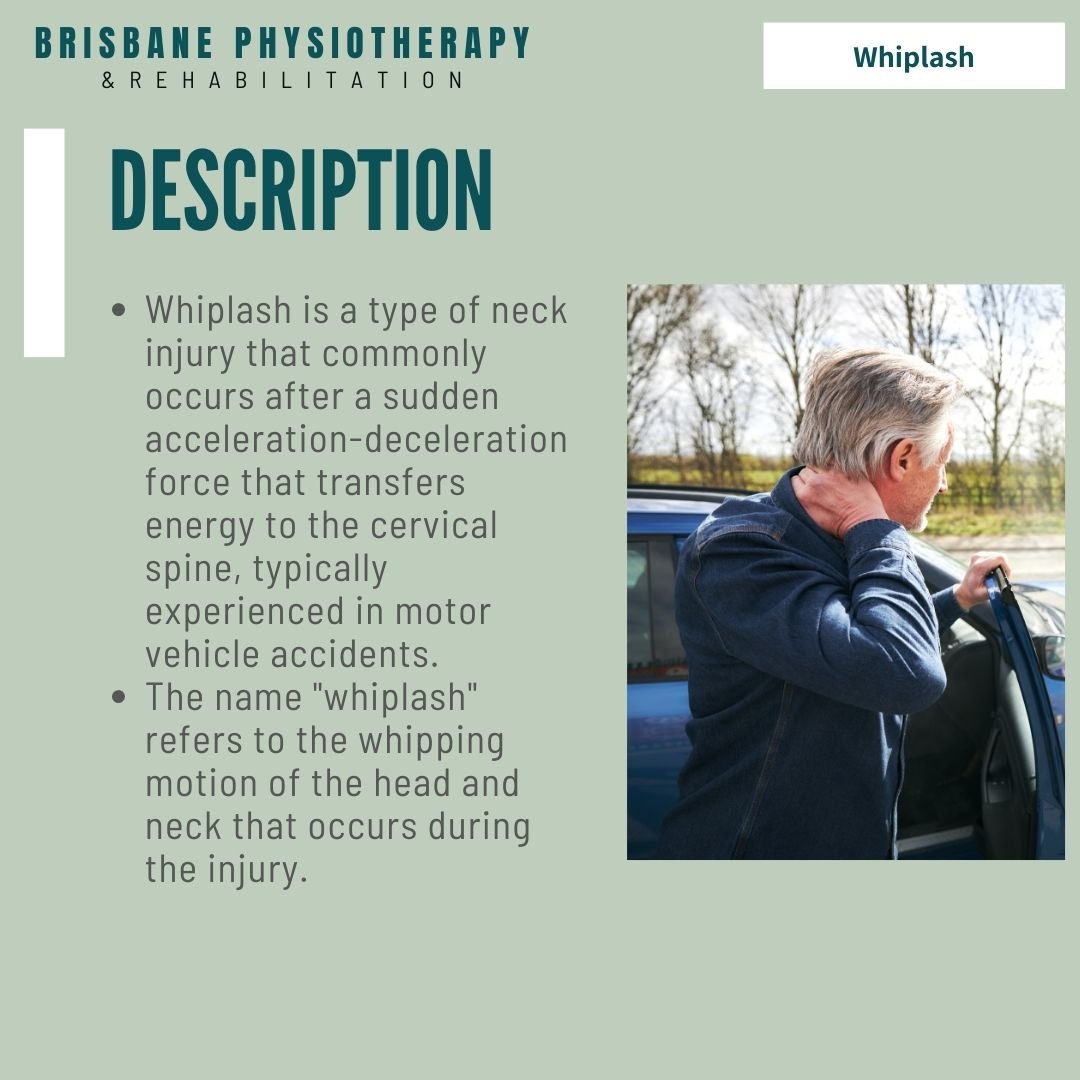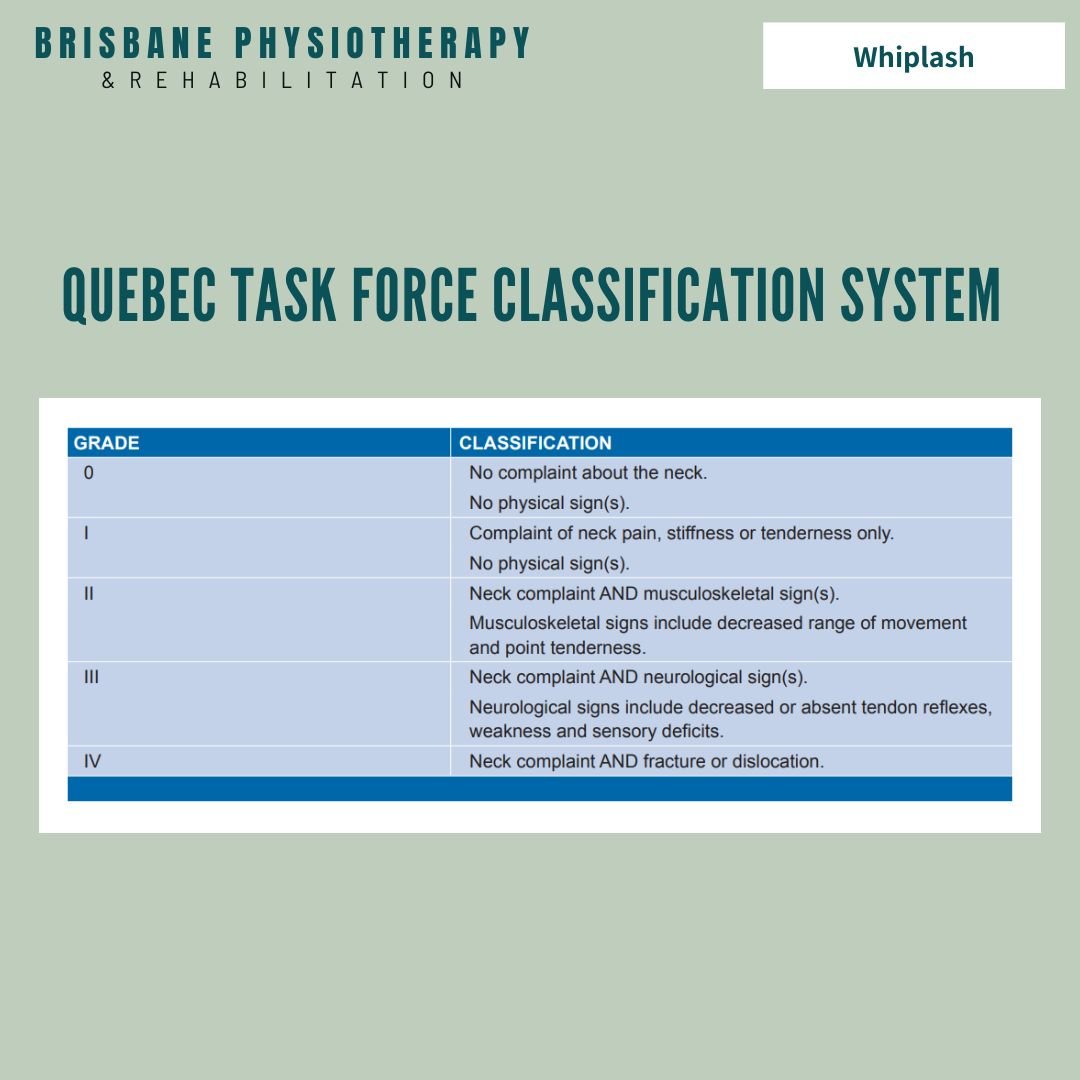Whiplash
What is Whiplash?
Understanding your injury – Brisbane Physiotherapy Edition.
Overview of Whiplash
Whiplash is a type of neck injury that commonly occurs after a sudden acceleration-deceleration force that transfers energy to the cervical spine, typically experienced in motor vehicle accidents. The name "whiplash" refers to the whipping motion of the head and neck that occurs during the injury.
Presentation
Mechanism of injury:
Initially believed to comprise neck hyperextension.
Now acknowledged as a complex buckling of the cervical spine with concomitant tension, shear, flexion and extension at different levels.
‘S’ Shaped curve – lower segments extend as upper segments flex in an abnormal non-physiological movement.
When someone sustains a whiplash injury, they may present with several signs and symptoms, which can vary in severity.
Common symptoms include:
Neck pain and stiffness: This is the most prevalent symptom.
Restricted range of neck movement.
Headaches: Tension-type headaches or cervicogenic headaches (originating from the neck) are common after whiplash.
Shoulder and upper back pain: The impact of the injury can cause pain and discomfort in the shoulders and upper back.
Arm pain: Some individuals may experience pain that radiates into the arms or upper back due to nerve irritation.
Upper limb neurological compromise: pins/needles and numbness in the arms.
Dizziness and vertigo: Whiplash can affect the vestibular system, leading to feelings of dizziness or a spinning sensation.
Visual and auditory disturbance
Fatigue: Many people with whiplash report fatigue and difficulty concentrating.
Cognitive and psychological symptoms: In some cases, individuals may experience memory problems, irritability, depression, or anxiety.
Managing Whiplash
Physiotherapists play a crucial role in the treatment of whiplash injuries. Their primary goal is to alleviate pain, promote healing, restore function, and prevent long-term complications. Here are some common physiotherapy treatments for whiplash:
Muscle facilitation and re-education:
Motor control retraining: deep neck flexor muscles
Postural re-education: Physiotherapists educate patients about maintaining proper posture and ergonomics to reduce strain on the neck.
Kinaesthetic re-education
Range of motion exercises: Gentle exercises and stretches are prescribed to improve neck mobility and reduce stiffness. Muscles that may be targeted include scalenes, upper traps, levator scap and pectoral
Manual therapy to help alleviate pain and restore joint function:
Massage
Pain-free joint mobilization
Strengthening exercises: Specific exercises are prescribed to strengthen the neck and shoulder muscles, improving stability and preventing further injury. Muscles that may be targeted include rhomboids, rotator cuff, deep neck flexors and serratus anterior.
Education and advice: Patients are provided with information about self-management strategies, including activity modification and home exercises.
Rehabilitation programs: In severe cases or when symptoms persist, physiotherapists may develop comprehensive rehabilitation programs tailored to the individual's needs, incorporating various treatment modalities.
Prognosis: Most recovery occurs in first 2-3 months – little significant change happens after this point.
If you are suffering from the effects of whiplash and would like us to help you get back to your best, then make a booking today!




